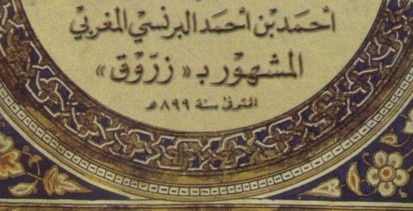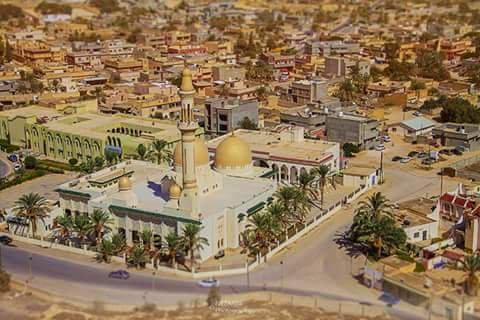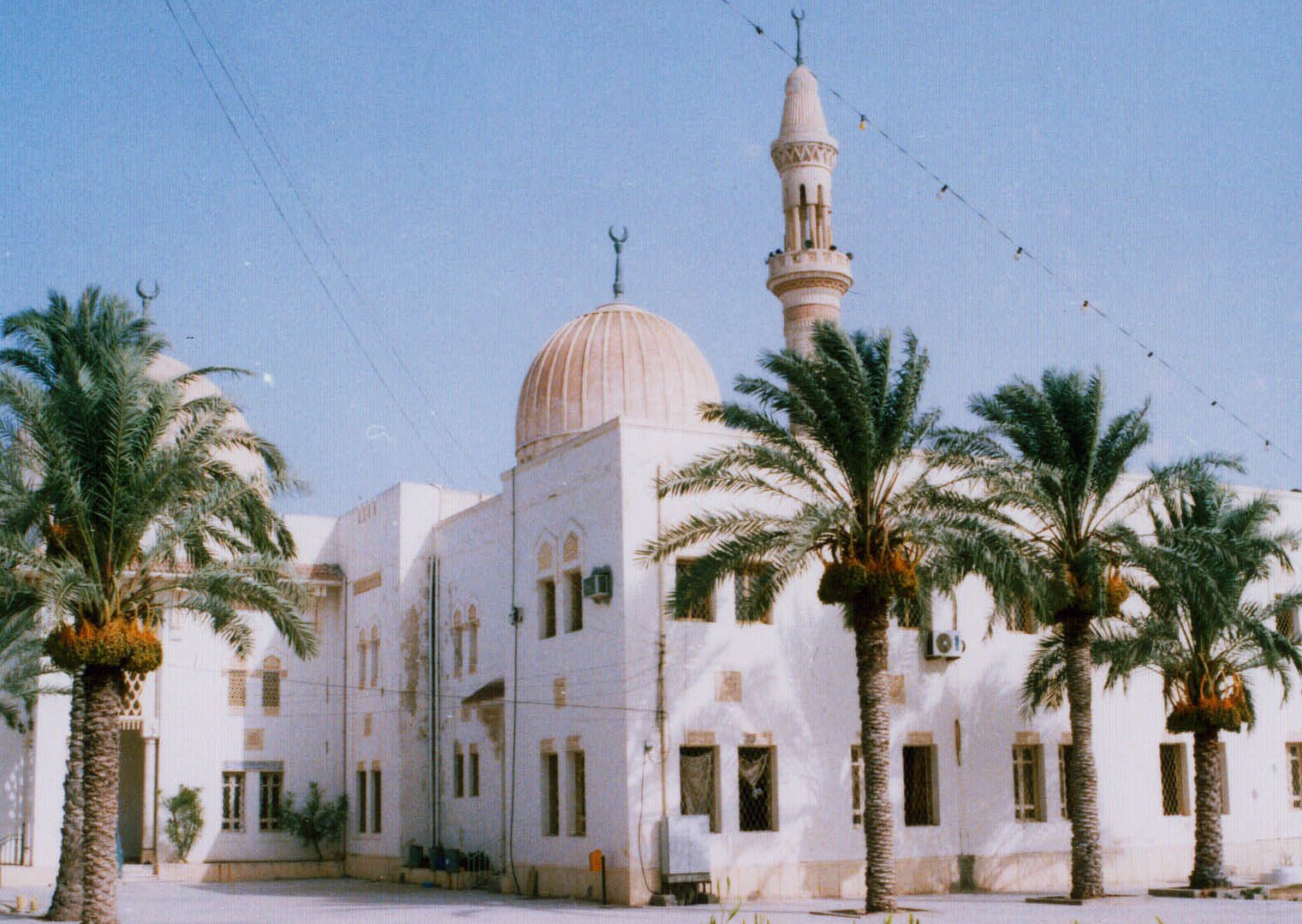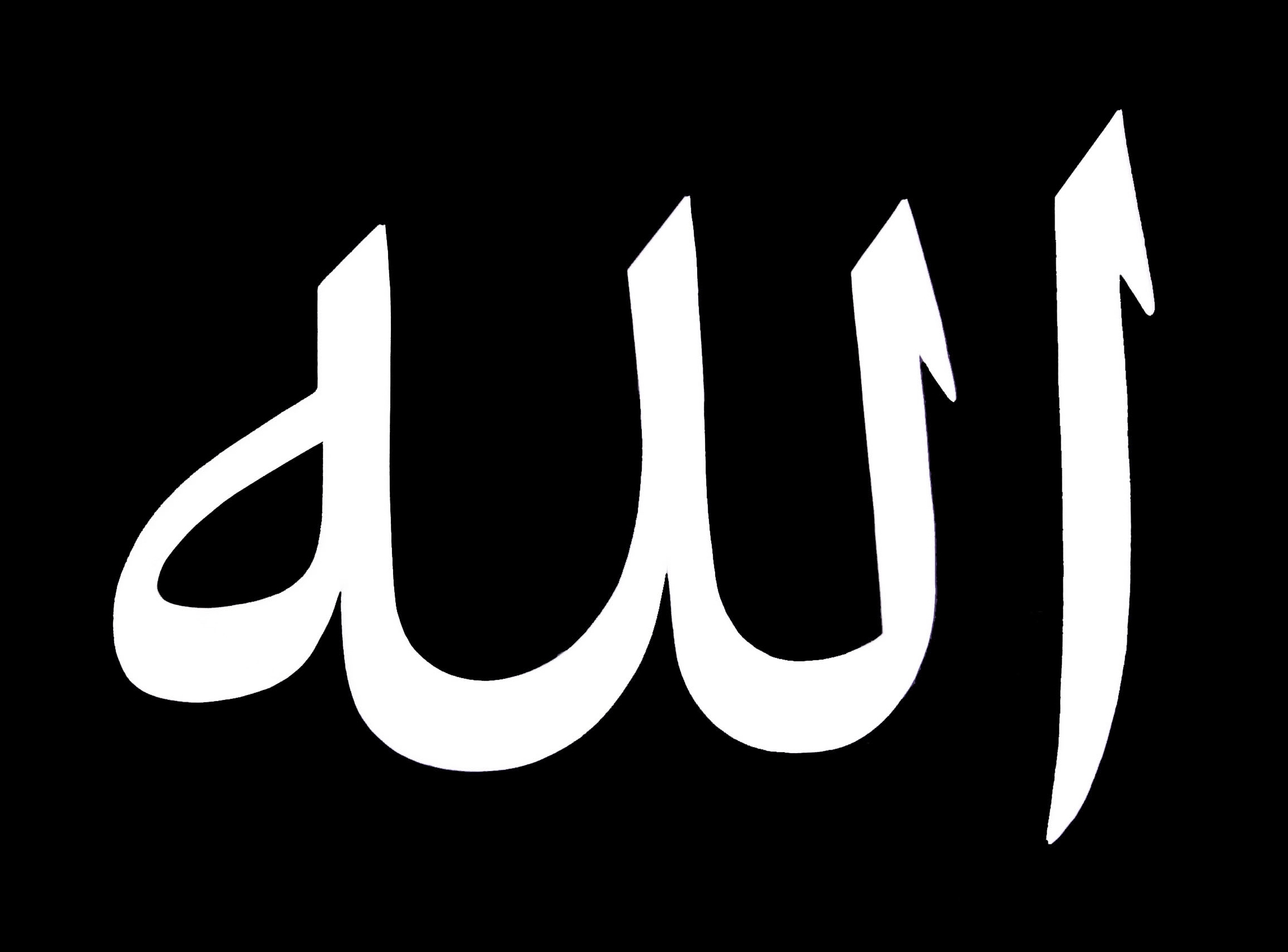From: Kuhin: Tabaqat Al-Shadhiliyyah Al-Kubra, translated by Ahmad Ali al-Adani as “Biographies of Prominent Shadhilis”
He is the ocean of sciences and gnoses, the teacher of every gnostic and enraptured one [majdhub], the godly qutb and lordly colossus, our master Abu’l-‘Abbas Ahmad b. Ahmad b. Muhammad b. ‘isa al-Burnusi al-Fasi, known as Zarruq [1].
He — may Allah have mercy on him — was a scholar who applied his knowledge, an ascetic who was scrupulous in matters of the din. He authored many books, whose exact number cannot be ascertained. They include an exegesis of the Mighty Qur’an, and a commentary on the Risala of Ibn Abu Zayd al-Qayrawani. He also penned three commentaries on the scholarly text Al-Qurtubiyya, thirty commentaries on Al-Hikam ´Ata’iyya, an elucidation of Allah’s Most Beautiful Names, and a commentary on Dala’il al-Khayrat. Other works of his also include Al-Nasa’ih al-Kafiya, Qawa’id al-Sufiyya (also known as Qawa’id al-Tasawwuf), and Al-´Aqa’id al-Khams. He authored other writings on Sufism, and quite a number of precious tracts and epistles.
He lived until the age of sixty three. Biographers have ascribed to him a work of autobiography, covering his life from birth to death, wherein he was wont to jot down things in the latter part of every day. He was born on Thursday, 12 Muharram AH 846. His maternal grandmother took care of his upbringing. She was one of Allah’s Friends and a woman of righteousness and purity. When he reached four years of age, she had had him memorize the Qur’an. She thus brought him up through precept and the inculcation of perfection, until he grew up fond of worship and consistently recitating litanies.
At this point, he commenced seeking knowledge of the outward sciences, the pursuit of which occupied him until people pointed to him as an authority. He came to then teach these sciences, engage in circles of learning to admonish people, and deliver lessons. As a result, he became famous and scholars were drawn to him, basking in his pesence, and taking from his sciences and gnoses. After all this, Sufism became endeared to him, and he joined the path of the Sufis at the hand of the guide in spiritual wayfaring, our master ‘Abdullah al-Makki. From him he took the spiritual way, serving him continuously for some time.
While in his service, it so happened that one day when visiting his guide [‘Abdullah al-Makki] during the latter’s solitary retreat, he beheld two women of beautiful form in his guide’s company, one on his right and the other on his left. The wide appeared to turn now to this one and then to that one.
Upon seeing this, our master Zarruq whispered to himself: ‘This man is a heretic’, whereupon the teacher retorted: `Go away, you jew!’
Sidi Ahmad Zarruq thus went away, and it was as if his teacher had cast the descriptive attribute of a jew upon him. He wept on account of this, and beseeched Allah Most High, setting out for one of his beloved companions and requesting that he go to the teacher and seek to win his favour. His dear friend accompanied him to the teacher and tried to attract his sympathetic compassion back towards Zarruq. Al-Makki pardoned and accepted him, saying: ‘On condition you do not sit with us in a country where I happen to be in.’ Thereafter, al-Makki turned to him and said: ‘O Zarruq, the two women who appeared to be ambiguously unclear to you, and who resembled one another in your perception, are this world and the Next. This world desires my advancement towards it, and the Hereafter requires from me that I should approach it, but I do not turn attentively to the utterance of either of them.’
After this incident, our master Zarruq left the city of Fez and set out for Cairo, where he met up with our liege and master, Abu’l-‘Abbas al-Hadrami. He took the path from him and received instruction in devotional recitations [awrad] from him. At his hand, a mighty spiritual illumination was bestowed upon him, so he too became a guide of spiritual instruction. He became affiliated to Abu’l-‘Abbas al-Hadrami and cleaved to his company. He was the only guide on whom he exclusively relied for journeying across the path.
When Egyptian scholars and pious men heard about his arrival, they paid visits to him in delegations, kept his company and attended his lessons. He took up a lecturing post at the noble institute of al-Azhar, his classes there being attended by approximately six thousand people from Cairo and the surrounding areas of Egypt.
He performed the functions of imam of the Malikiyya, becoming the main teacher of the portico allocated to their school in al-Azhar. They set up a tall chair for him, resting on firm pillars and with a strikingly original and well-constructed shape. He would seat on it, deliver his lectures and enrich the attendees by his knowledge. Both free men and slaves benefited from his presence. This chair still exists until the present time by the portico of the Moroccan masters in the noble institute of al-Azhar.
He exercised tremendous influence and authority over the Emirs of Egypt, while all Egyptians, the elite and commonality alike, accepted him.
After his time in Egypt, he relocated to Libya’s Tripoli, where he brought the signposts of the path to life and shed clear light on the actualization of ultimate reality. There, he lent fame to the Shadhili Path and turned their radiant luminaries into household names. Committed disciples yielded to him submissively, while the kings of the world were awe-struck by him. He gathered with the master of all Messengers ﷺ, and a path was ascribed to him when the lights of the folk of ultimate reality manifested on him. While holding his beard, he was instructed by his spiritual state to say about the arena of real men: ‘There is no shaykh after this beard.’
He was a man endowed with a mighty spiritual state, radiance, beauty and bravery. Allah Most High acquainted him with hidden realities, so he spoke in languages other than Arabic, no two people disagreeing about this fact, and no conflicting statements on this having issued forth from any two individuals. He possessed the greatest capacity of disposal in matters, and was the brightest succour of men.
Saintly miracles emanated from him, and he was gifted veracious states. Among his miracles is when he passed an Arab tribe of Tripoli, consisting of brigands and highway robbers, no caravan passing by them but that they would plunder it. They looted him and his companions, forcing them to cover their private parts with their hands (as everything had been seized and pilloried from them). A disciple looked at our master and found him in an unchanged state, and said to one of the bedouins who had plundered the group: ‘Look at that teacher, he has some gold in his trousers.’ The bedouin thus came up to our master and instructed him to remove his trousers, whereupon the shaykh replied: ‘Glory be to Allah! It is forbidden for us to lay bare our private parts.’ The bedouin repeated the order a second time, saying, ‘Take it off, or else I shall kill you!’ Our master admonished him, saying, ‘It is prohibited for us to expose our private parts.’ The bedouin advanced towards our master, who instructed the earth, saying ‘Swallow them!’ The earth seized all of the bedouins, so they began humbly imploring our master, saying, ‘We have turned (in repentance) to Allah.’ Our master then told the earth, ‘Release them, earth’, and it set them free from its clasp, whereupon they came out of it and proclaimed their repentance in unison. Thereafter, they kept our master’s company, all of them without exception, and became servants of the Zarruqiyya Zawiya. To this day, their descendants serve the zawiya, and they are called “the servants of the Zarruqiyya Zawiya”.
Among his sayings are these verses from his poem rhyming in ta’ [ta’iyyah]:
I have fled from creation, all without exception
Perchance I’ll see my heart’s Beloved with my eye.
I have ruled the Western world, no part of it excepted;
While all Eastern nations are in my grip seized
To my committed disciple, I gather his loose threads
Whenever oppressive times by my own force pounce down.
If you, then, are in grief; tightness or hardship,
Call out, ‘0 Zarruq! ‘ I’ll be there in a moment.
How many a sorrow is removed when our name is mentioned,
And how many a sorrow is removed by instants of my company.
He passed away — may Allah be pleased with him and benefit [us] through him — in AH 899 and was buried in Misurata, near Tripoli in Libya. A large mosque has been built over his remains, in which the Islamic rites are established, together with a shrine and mausoleum visited by people: no one directs himself to Allah there through him but that he attains what he hopes for.
O Allah, we direct ourselves to You through him so that You might be for us a Helper and a Supporter, and so that You might raise us in the company of Your Friends, succesfully convoy us to service fort hem, and cause us to die with love fort hem until we meet Y7u, O Lord of the worlds!
Footnotes:
[1] See his biography in al-A’lam (1/91), Ibn Jadhwat al-Igtibas li Dhikr Man Halla min al-A’lam Madina Fas (p. 60), Ibn al-‘Imad’s Shadharat al-Dhahab (7/363), where he is named as Ismail b. Muhammad al-Burlusi, Mu’jam al-Matbu’at (p. 965), al-Khazanat al-Taymuriyya (3/121), Dar al-Kutub (1/269, 317, 376) and Tabaqat al-Shadhiliyyat al-Kubra by Muhyi al-Din al-Tu`mi (p. 136).
Reference:
Muhammad b. Qasim al-Kuhin(2016), Tabaqat Al-Shadhiliyyah Al-Kubra Biographies of Prominent Shadhilis, Visions of Reality Books.






